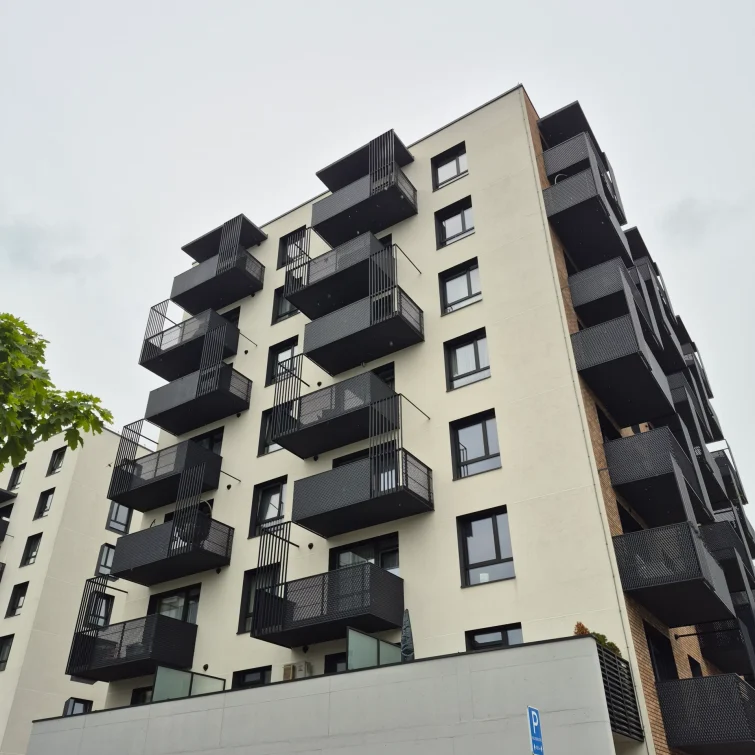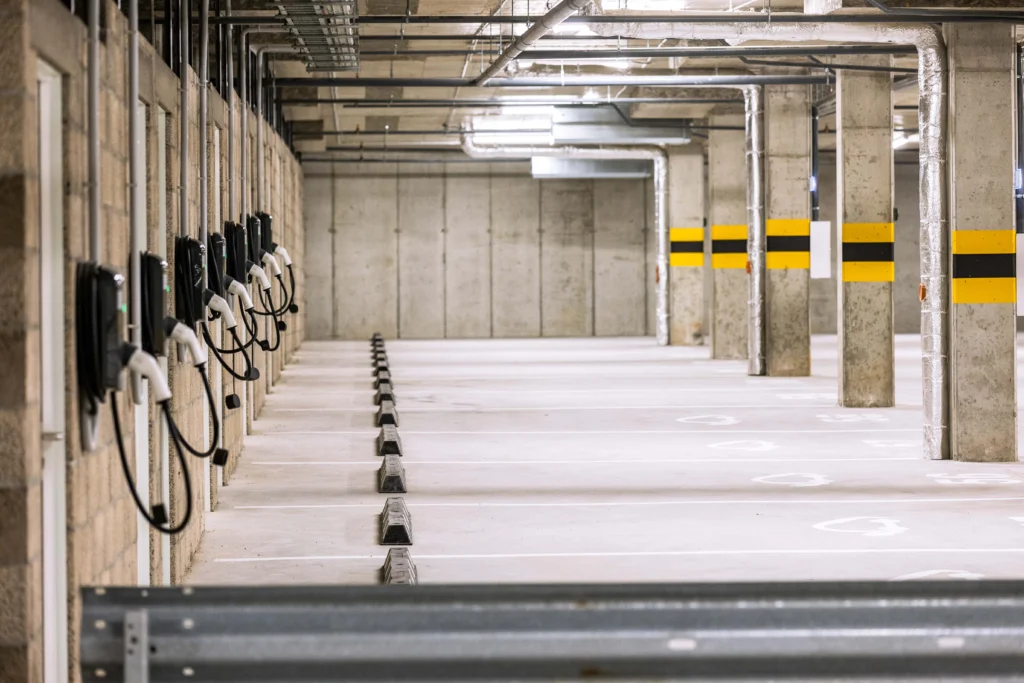More and more people are choosing electric cars for their environmental friendliness, cost-effectiveness and the comfort offered by new technologies. However, living in an apartment block raises many questions about the feasibility or technical nuances of installing a stop. In this article, we will discuss what is important to know and how to choose an EV charging station for an apartment dweller.

To set up a private charging station in an apartment block, you need your own parking space or garage. Private charging points are usually connected to the meter of the resident’s apartment, if technically feasible. Otherwise, the stop may also be connected to the communal meter. An additional control device is then installed to provide information to the building manager on the electricity consumed for charging the electric vehicle. The resident receives a normal bill for common services, which additionally includes the cost of charging the electric vehicle. The bill is only given to the resident who uses the station.
It is important to note that if you own a parking space or garage, you do not need the consent of your neighbours to install a bus stop.
Once the project is ready, that’s enough, get permission from the building manager or the chairman. In rare cases, where excavation work in the yard or work affecting the façade of the house is required, additional consents or approvals from the authorities may be needed for the utilities to be crossed.

AC (alternating current) charging stations for the home. They pass power through the electric vehicle’s internal inverter, which converts the AC current into DC power suitable for the battery. These stations are typically between 3.6 and 22 kW, are easy to install and do not require very high energy inputs.
To ensure a smooth charging process, the compatibility between the electric car, the charging station and the home electricity grid should be assessed. First, check the power rating of the charging stations recommended by your car manufacturer. For example, for the Nissan Leaf, the most commonly recommended charging station is 7.4 kW, which allows the car to be fully charged in 7-8 hours. Meanwhile, Tesla Model 3 owners are often recommended an 11 kW charging station for faster charging in 5-6 hours. Similarly, if your electric car supports three-phase charging, a three-phase charging station is also recommended for faster charging of your car.
Check your home mains electricity network once you know the parameters of the station. You can find out how much power your apartment has in ESO’s self-service. If your home is wired for 11kW and you want to use an 11kW charging station, it is recommended that you add a Dynamic Power Controller.

This device will help prevent power cuts at home by limiting the power available for charging your electric car when appliances are used most intensively at home. When appliances are switched off and the power reserve rises again, the station automatically increases the charging power. This not only ensures the most efficient use of power, but also ensures an uninterrupted supply of electricity and avoids the hassle and cost of power uprating. However, if the home grid is not capable of providing sufficient power, improvements to the grid may be necessary, but it is advisable to test the dynamic controller first to see what it can do, but this can be done at a later stage once it is clear that the charging rate is insufficient even with the DLM.
In order to assess the installation of the bus stop, it is important to take into account the route of the cable. For example, if your parking space is located in an underground car park, it is likely that the cable will need to be routed from the electrical panel through the ceiling of the space. If the parking space is located in an above-ground car park, excavation and concreting of the base of the stop may be required if the installation is to be mounted on an additional stand. It can be a challenge to calculate the exact cost and accessories required yourself, so we recommend that you have a professional assess the cost and feasibility of installation.
It is also important to think about how you usually park your car. This will help you determine the best place to install the charging station so that you can conveniently connect the charging cable. The length of the cable is also an important consideration – a cable that is too short can be an inconvenience, while a cable that is too long can be unnecessary and expensive. A cable length of 5-7 metres is usually recommended.
Today’s charging stations can offer a wide range of smart features that not only provide convenience but also help you save money. For example, some charging stations have the ability to set a charging schedule to charge at night when the electricity tariff is lower, or to automatically charge during the cheapest electricity exchange hours with Nord Pool integration. It is also possible to monitor the charging process and the amount of energy consumed via a mobile app.
RFID is a convenient way to authorise charging when you want to prevent others from using the station, which is quite relevant in multi-storey car parks. Although many charging stations have a mobile application for user identification, an RFID reader can improve the user experience by simply sticking a special card/pendant to the station.
The integrated cable is another comfort-enhancing feature. This means that the cable is attached to the stop and does not need to be plugged and unplugged every time. This is very convenient as it saves time and also reduces wear and tear on the cable connections, so it will last longer.
When choosing a charging station, it is also worth looking at the warranty. Most manufacturers offer a 2-3 year warranty, but there are others that offer up to 5 years. This is important to ensure that the charging station will be repaired or replaced if there are any problems.

The total cost of the project depends mainly on the model of charging station chosen, the complexity of the installation and the length of the cable route. However, on average, a charging station and installation work in a block of flats costs around €2,500.
Financial support is currently available in Lithuania for the installation of charging stations for electric cars in apartment blocks. Those wishing to install a charging point can get up to €1,055 back through funding from the Lithuanian Energy Agency (LEA).
The application can be submitted before or at the same time as the installation, but it is essential that the project is eligible for support. It is therefore advisable to consult a specialist before starting work to help you plan properly.
The deadline for applications is 30 September 2025 at 17:00 on the Agency’s website.
Find out more about the support here.